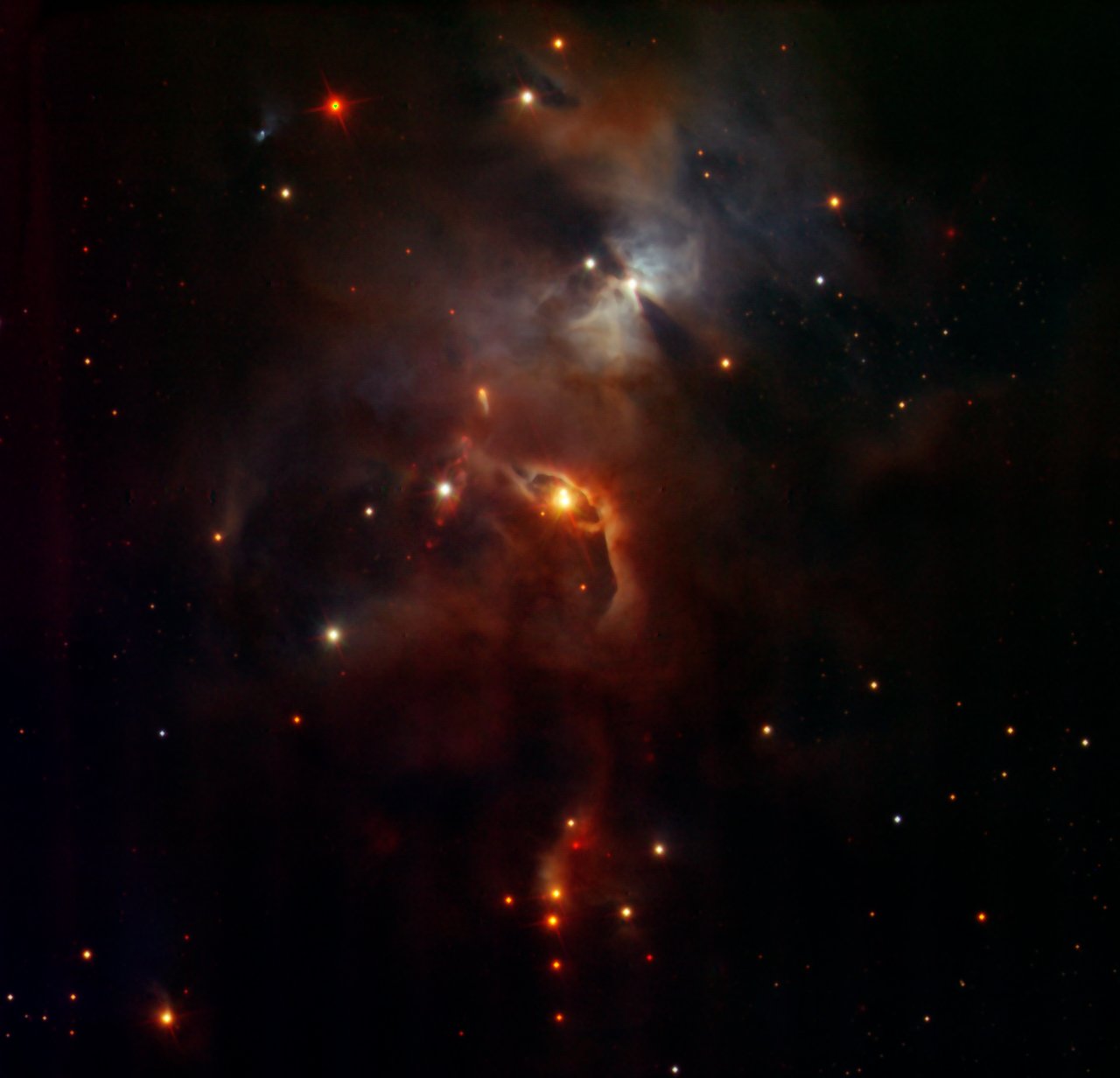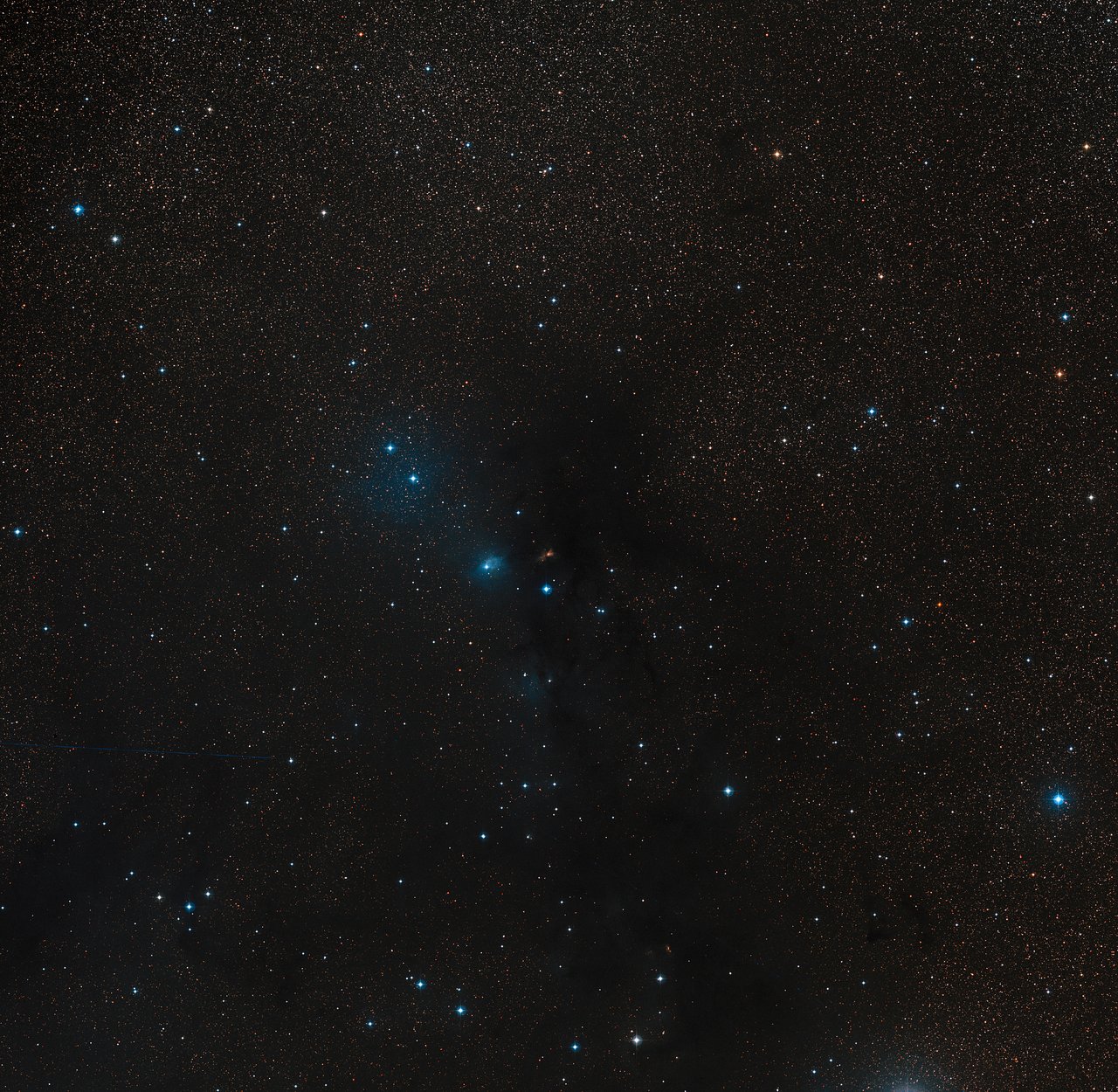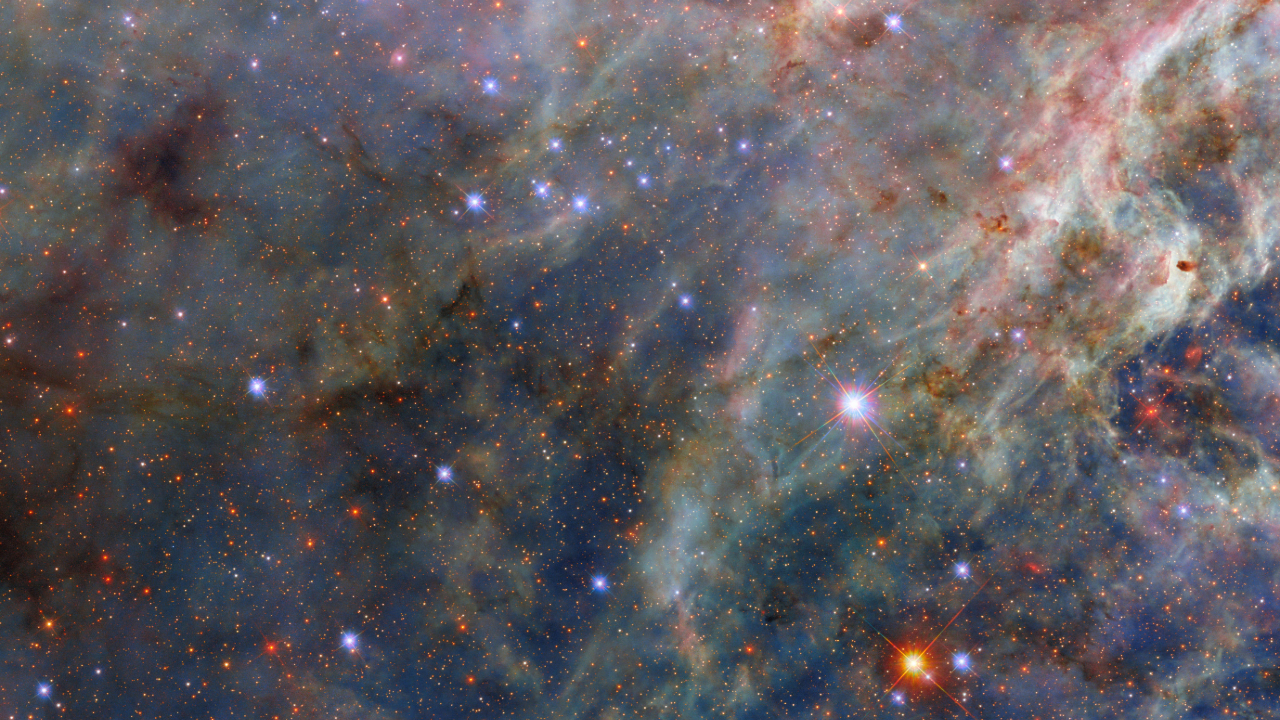A Cosmic Dark Knight Rises in Spooky 'Bat Wing' Hubble Photo
Stand aside, Batman — your bat signal has nothing on a huge "bat shadow" the Hubble Space Telescope spotted in a distant gas cloud.
Just in time for Halloween, the new image shows a "striking shadow" in Serpens Nebula, which is about 1,300 light-years from Earth, European Space Agency officials said in a statement. Astronomers nicknamed this the bat shadow, because, well, it looks a lot like a bat with outstretched wings.
You can see the two black streaks stretching from either side of a star called HBC 672, which is lighting up the surrounding gas cloud (or nebula). While the bat's wings are a spooky sight, there's a natural explanation for them: They occur because HBC 672 is surrounded by a disk of material that could one day turn into planets.
"By clinging tightly to the star, the disk creates an imposing shadow, much larger than the disk — approximately 200 times the diameter of our own solar system," ESA officials wrote. "The disk's shadow is similar to that produced by a cylindrical lamp shade. Light escapes from the top and bottom of the shade, but along its circumference, dark cones of shadow form."
Most of the shadow is jet-black, but astronomers do see some color changes along the edges. This helps researchers learn more about the size and composition of the dust grains in the disk, ESA officials added. The shadow feature is rather striking, but it's just the angle that makes it look unusual; these shadows are actually very common around young stars.
"The whole Serpens Nebula, of which this image shows only a tiny part, could host more of these shadow projections. The nebula envelops hundreds of young stars, many of which could also be in the process of forming planets in a protoplanetary disk," ESA added.
If you use your bat vision, you can even see another bat-like shadow in the same image, in the upper left-hand corner. Maybe the shadows are not spooky enough to scare Gotham, but they're neat signals demonstrating how our solar system used to look. Scientists commonly study protoplanetary disks to learn more about our solar system's history.
Breaking space news, the latest updates on rocket launches, skywatching events and more!
Hubble has hosted other spooky sights in the past. Just check out this gallery of nebulas for a few examples.
Follow us on Twitter @Spacedotcom and on Facebook. Original article on Space.com.

Elizabeth Howell (she/her), Ph.D., was a staff writer in the spaceflight channel between 2022 and 2024 specializing in Canadian space news. She was contributing writer for Space.com for 10 years from 2012 to 2024. Elizabeth's reporting includes multiple exclusives with the White House, leading world coverage about a lost-and-found space tomato on the International Space Station, witnessing five human spaceflight launches on two continents, flying parabolic, working inside a spacesuit, and participating in a simulated Mars mission. Her latest book, "Why Am I Taller?" (ECW Press, 2022) is co-written with astronaut Dave Williams.



